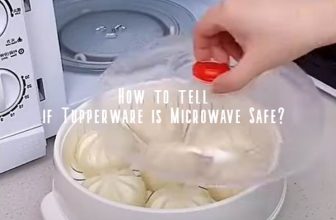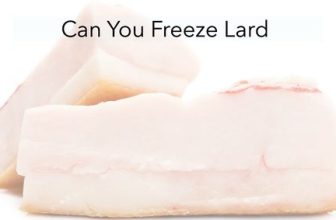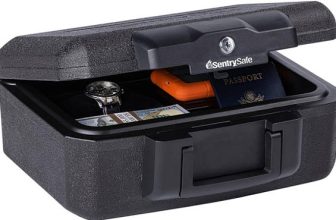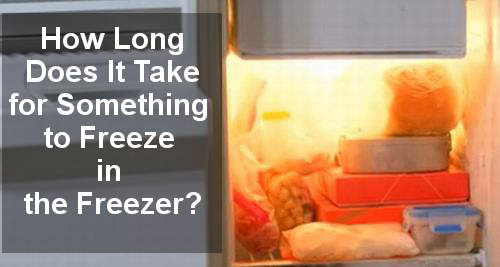
Have you got some leftovers? Don’t throw them away. Extra food should be preserved and consumed later. Several great methods exist. Freezing is worth being specified among the best ones. It’s simple and versatile. Virtually any food, except eggs in shell can be frozen. However, how long does it take for something to freeze? Let’s consider some factors that influence the process. Do you want to give it a boost or just to make it safe and handy? I’ll try to take the questions.
Common Food Preservation Methods
Extra food is preserved by various methods. It may be dried, canned, pickled, smoked or salted. For example, fruits and berries are jellied or jammed. Above all, sugar or salt dissolved in water slow down growth of spoilage and malignant bacteria. However, an abundance of these substances increases the risk of obesity and several serious diseases.
Dehydration is one of the oldest and best food preservation methods. It’s used to produce dairy products. Drying fruits, herbs, and berries is beneficial, as no chemical additives or preservatives are added. Dried food should be stored in airtight freezer bags in a dark, dry location, at a temperature of about 60° F. According to research, A and B vitamins are retained. However, dehydration affects nutritional value of heat-sensitive food, such as meats.
Benefits of Freezing Food
Therefore, freezing is the most efficient and simple method to preserve perishable food. It’s:
- safe;
- cost-efficient;
- handy;
- easy.
Frozen food is safe, virtually fresh and nutrient-rich. Its quality and nutritional value are retained. Smell, taste and color changes are not significant. You can thaw and eat fruits and vegetables all year round. Freshly caught fish may be defrosted, cooked and served when you need it.
How long does it take food to freeze?
The time it takes for food to freeze depends on various factors like size, density, and your freezer’s temperature. Generally, smaller items might take a couple of hours, while bulkier goodies could need overnight VIP treatment. Keep that freezer door closed, and let the frosty transformation unfold.
Factors like the initial temperature of the food and the type of container also play a role in freezing times. Warmer food takes longer, and shallow containers freeze faster than deep ones.
For optimal results, ensure your freezer is set to the recommended temperature, typically around 0°F (-18°C). A well-organized freezer, with space between items for air circulation, promotes faster and more even freezing.
If you’re in a hurry, consider using the quick-freeze setting on your freezer, if available. This function lowers the temperature temporarily, speeding up the freezing process.
Remember to label your frozen items with the date to keep track of their freshness. And lastly, while the waiting game can be tough, the reward of having a stash of delicious, ready-to-go frozen treats is well worth it! Patience pays off in the world of freezing!
Frozen Food Safety
According to USDA, food is to be frozen at its peak quality. If any leftovers remain, freeze them at once after the party. If you are sure the food is excess to eat soon, don’t wait a few days. Additionally, proper packaging should be used.
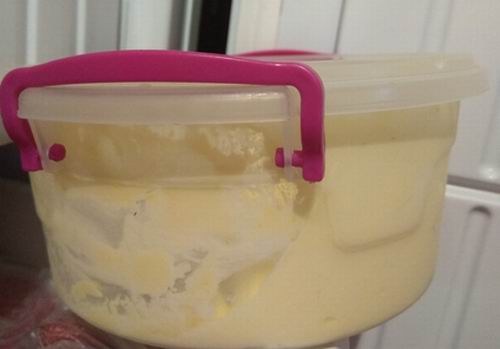 If you buy poultry or meat in its original packing, it’s safe to place it in the freezer as it is. However, bags that are permeable to air are suitable for short-time storage only. The best containers for freezing food are:
If you buy poultry or meat in its original packing, it’s safe to place it in the freezer as it is. However, bags that are permeable to air are suitable for short-time storage only. The best containers for freezing food are:
- Airtight.
- Appropriately sized.
- Freezer-safe.
- BPA-free.
- Properly labeled.
A container with air-tight lid can be used to store liquids, such as soups, juices or milk. Solid and semi-solid food such as steaks or ground meat is recommended to store in zipper-lock bags. Squeeze out air and seal up the bag as soon as it’s full. However, let’s discuss the time to freeze various food.
When Does Water Freeze in Celsius?
Under normal conditions, water starts freezing at 0°C (that is 32°). However, it happens only when:
- water is pure;
- atmospheric pressure is equal to 1 atm. (about 0.1 MPa);
- at sea level.
Scientists from the University of Utah studied liquid water at much lower temperatures.
What is Frozen Water
| Conditions | Normal | In Clouds | In The Lab |
|---|---|---|---|
| Temperature, °F | 32 | -40 | Up to -55 |
| Atm. Pressure, atm. | 1 | 2 | 3-5 |
When density of water decreases, it’s molecules form tetrahedrons. Its crystallization process is slowed down. What about the freezer? Water does freeze when the temperature drops up to -5° C (23° F), or even up to -°10 C (14°F). It depends on several factors.
How Long Does It Take to Freeze Food?
Are you in a hurry? The process is independent. It doesn’t take your time. Just pack food properly and place in the freezer. Meanwhile, the time depends on:
- Container size.
- Its volume and form.
- Temperature inside the freezer.
- Food structure and texture.
Par example, bottled water is frozen in about 2 hours. In a cup, it turns to ice faster, during an hour. Ice cubes in a plastic tray behave the same way. So, I think, size of freezing containers for food matters. Packed in small portions, food freezes fast. It’s safer to thaw and more convenient to use.
Additionally, consider condition and texture of food. That is, juice commonly freezes faster than milk. Raw meat cut in steaks gets solid in a couple of hours. Large pieces of meat get iced in 6-8 hours.
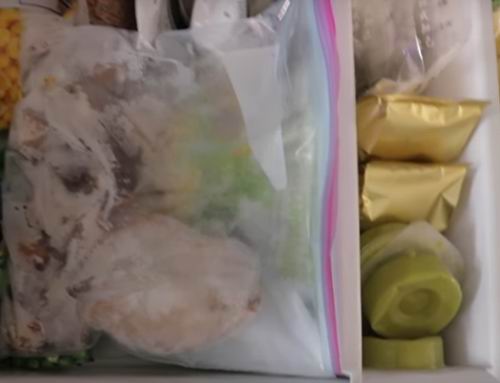
How Do You Instantly Freeze Something?
According to USDA, rapid freezing is beneficial. It prevents large ice crystals from forming. Meat texture remains unchanged. Cream or mayonnaise don’t separate.
Several foods don’t freeze well. They are:
- high-moisture vegetables;
- custard;
- sour cream;
- milk;
- meringue and pies.
How do you freeze milk? It expands, becoming solid. So, some headspace is to be left in the container. Otherwise, glass bottles crack. Additionally, it’s flavor is changed after thawing. Meanwhile, celery and cabbage become watery.
However, emulsions still can be frozen. Separation may be avoided. Which way? The reason is in temperature. It is to be lower than 0°F. Use a “quick-freeze” shelf. Set the lowest possible temperature. Free-standing, chest domestic appliances are beneficial. They allow settings to -21 degrees.
How Long Can You Keep Food in the Freezer?
So, if a piece of meat or cheese that is 2-inch thick freezes in 2 hours, it’s ok. Don’t forget to check the star rating of your freezer. It determines the shelf life of your food and how long does something take to freeze.
Temperature and Storage Time of Frozen Foods
| Rating | Temperature, °F | Max. Storage Life |
|---|---|---|
| * | 21 | 1 week |
| ** | 10 | 1 month |
| *** | 0 | 3 months |
| **** | 0 | longer than 3 months |
Quite naturally, food type matters. For example, fresh meat cut in steaks and chops are safely stored at a constant temperature of 0 °F during 4-12 months. Soups remain fresh during 2-3 months. However, pizza, leftovers, and open packages are kept frozen, for not longer than 1 month. These are just some clarifications on the issue, how long does it take for food to freeze. Read more.
Some foods require additional detailing. Do you know, how long can you freeze ham before it goes bad? The shelf life of cooked, fresh, cured, and spiral ham is different. Even cut matters. Large pieces of meat are stored safe longer. Sliced or diced dishes are spoilt in a month.
Can You Freeze Plastic Containers and how long does it take things to freeze?
Plastic is a versatile material. It’s lightweight, transparent and affordable. Quite naturally, plastic containers are less durable than glass bottles or jars. However, they are less breakable. Unlike metal containers, plastic ones are rust-resistant. Are they safe?
Plastics suited to pack and store food are:
- PET (Polyethylene Terephthalate).
- HDPE (high-density polyethylene).
- LDPE (low-density polyethylene).
- PP (polypropylene).
- Bio-plastic.
Above all, they are moisture-resistant. Consequently, best containers are made of polyethylene. Polypropylene may crack at freezing temperatures. Additionally, the containers are to be FDA-approved, BPA-free.
Packing food to bags is also possible. Difference between freezer and storage bags is in their thickness and durability. All zip-top bags are safe. They are used to store food in the freezer. How long do things take to freeze in zip-top bags? Regular ones are just prone to rips and punctures.
Overall Impression: How long does it take to freeze something?
So, if you are going to freeze food, don’t consider the time. Divide it into small portions, pack properly, label. Try to set the lowest possible temperature. Now, don’t forget to consume your ham or berries before expiration dates. Fresh dishes are delicious and healthy. They grace your table, saving your precious time.
Table of Contents


